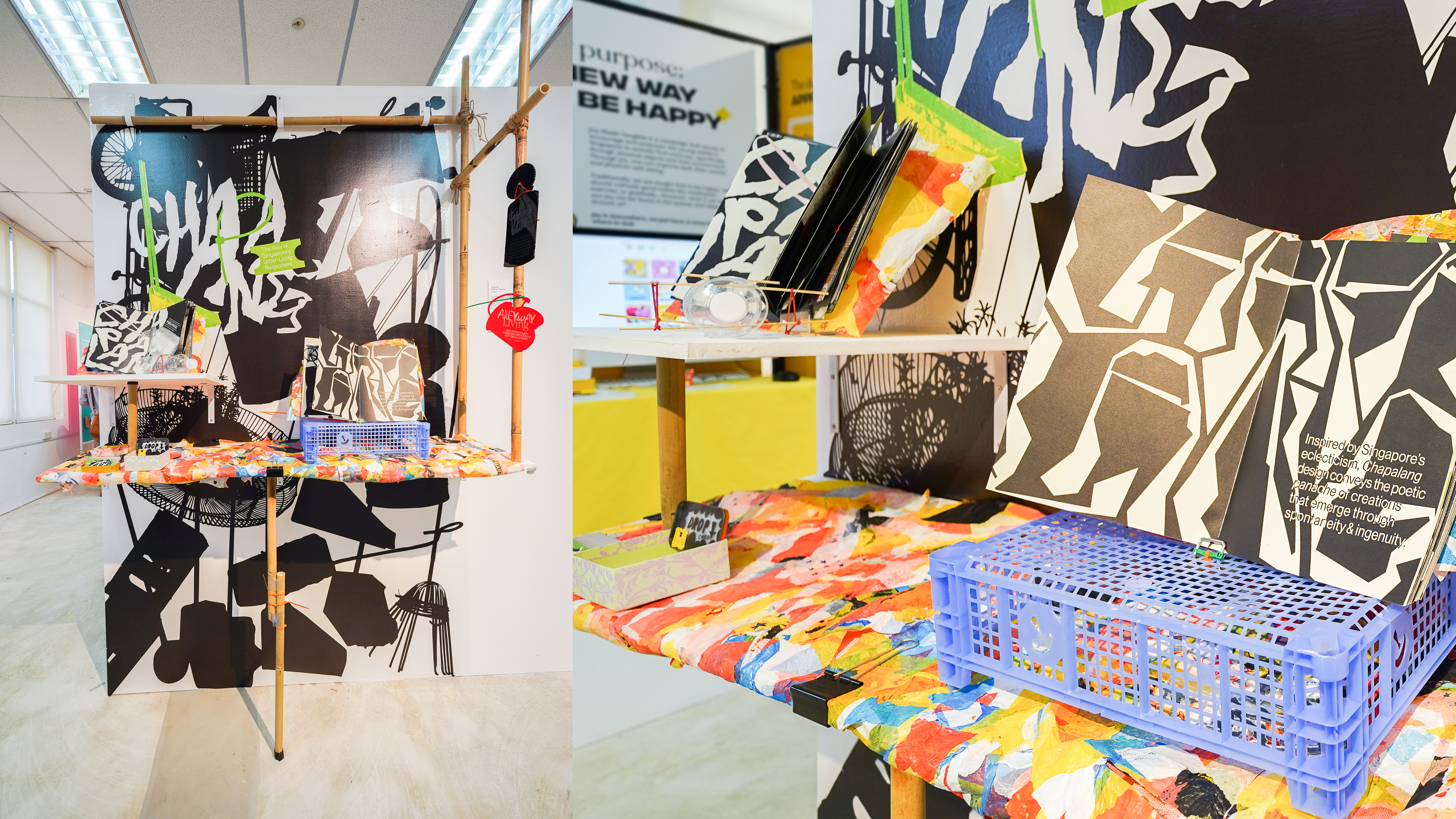Editorial & Typography
Location: Singapore
Date: May’ 2021 - May’ 2022
Work:
Wah! so Chapalang is a project on Singaporean's refined kitsch design interventions. The terminology Chapalang design stems from a frequently used phrase ‘Chapalang’ across Singapore, which signifies the use of eclecticism in a haphazard manner. The so-called Chapalang philosophy can be observed in objects, individuals, situations, and mannerism in Singaporean culture. More significantly, it carries an anti-aesthetic approach in the design of functional purposes in urban regions. In the Singaporean lifestyle, the devices are innovated during living situations to stimulate and embrace the Chapalang way. Through the lens of the Singaporeans' narrative, this research work will explore and document the lifestyle of people and convey the poetic panache of Chapalang designs that emerge through spontaneity and ingenuity. Furthermore, in this research project, the nature of Singaporean Chapalang will be documented, deconstructed, and promoted by highlighting the common ideas of upcycling and creating resourceful designs. In addition, various post-modernist philosophies, such as Object-Oriented Ontology (OOO), Existentialism and Avant-Garde art movements, will be studied thoroughly, as their corresponding design approaches are reflected in the Chapalangdesigns in Singapore.
The Hokkien phrase Chapalang originates from a colloquial slang frequently used in Singapore and Malaysia to describe an object (or a subject) with aesthetically chaotic traits or behaviours that are entirely inadvertent. Here is the breakdown of each Chinese character in the word Cha-pa-lang – Chī (吃) implies to eat, Bǎo (饱) implies satisfied, and Rèn (人) implies person. Hence, the original definition of the phrase - "One who has eaten their fill" carries the association with individuals being nosey, drunk, or free-spirited. Another everyday slang similar to Chapalang is Rojak, a Malaysian culinary dish prepared from mixed vegetable and fruit salad.
Despite its negative connotation, the word Chapalang was chosen for this research study because it embodies the essence of Singapore's humanistic attitude and lifestyle, which is appropriate for this study. The contrasting nature of Chapalang's appearance and haphazardness at the backdrop of Singapore's overall spotless and structured facade is the starting point for investigating and deconstructing the phrase itself in these design approaches and mindsets. Chapalang embodies the intricacies of the corresponding speculative philosophy and psychological thought process: i.e., Graham Harmon's Object-Oriented Ontology (OOO) and James Gibson's theory of affordance. The environment incorporates the thoughts of these Chapalang occurrences or devices, and they have an invisible yet artistic presence in our routine lives.



